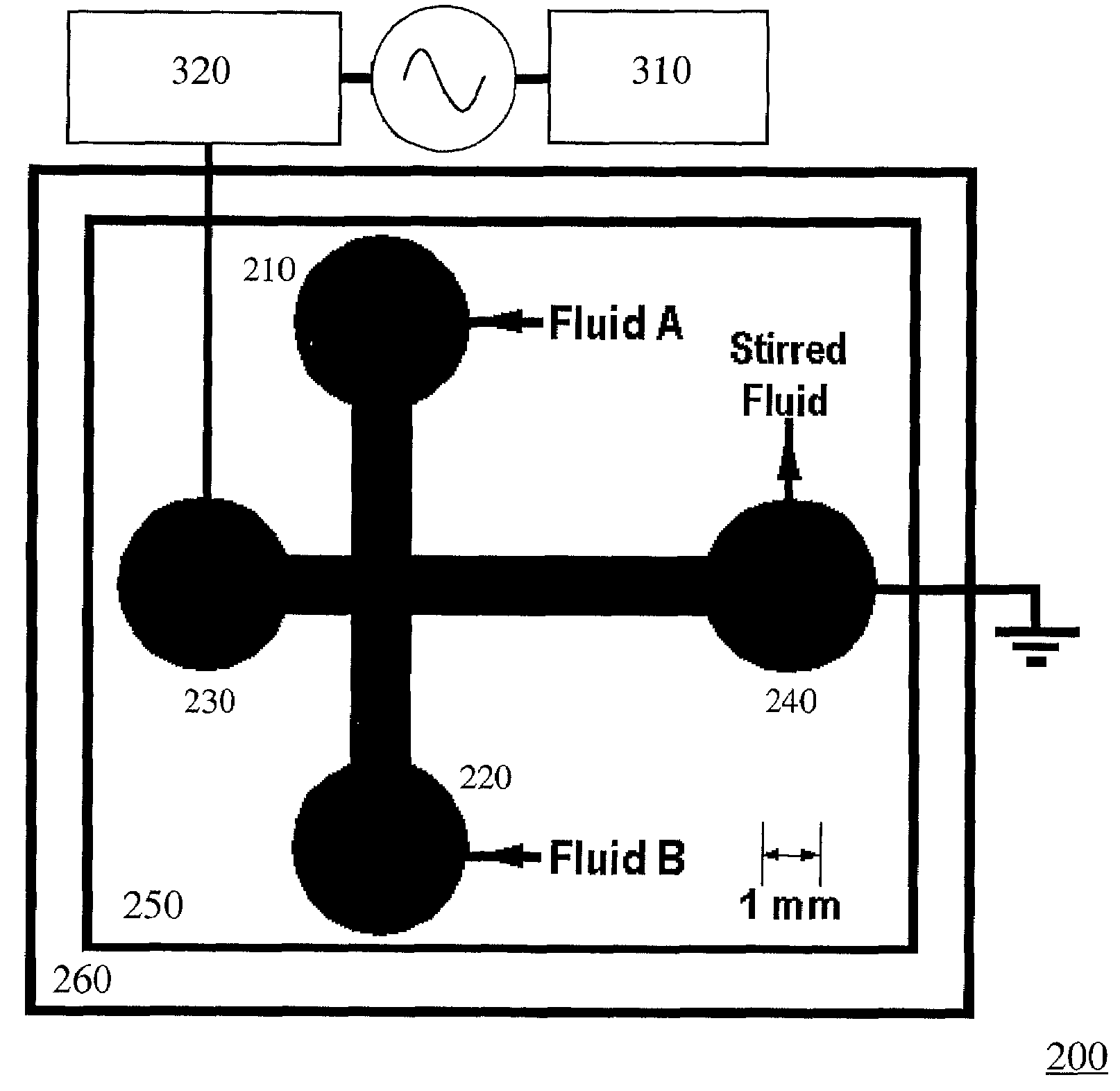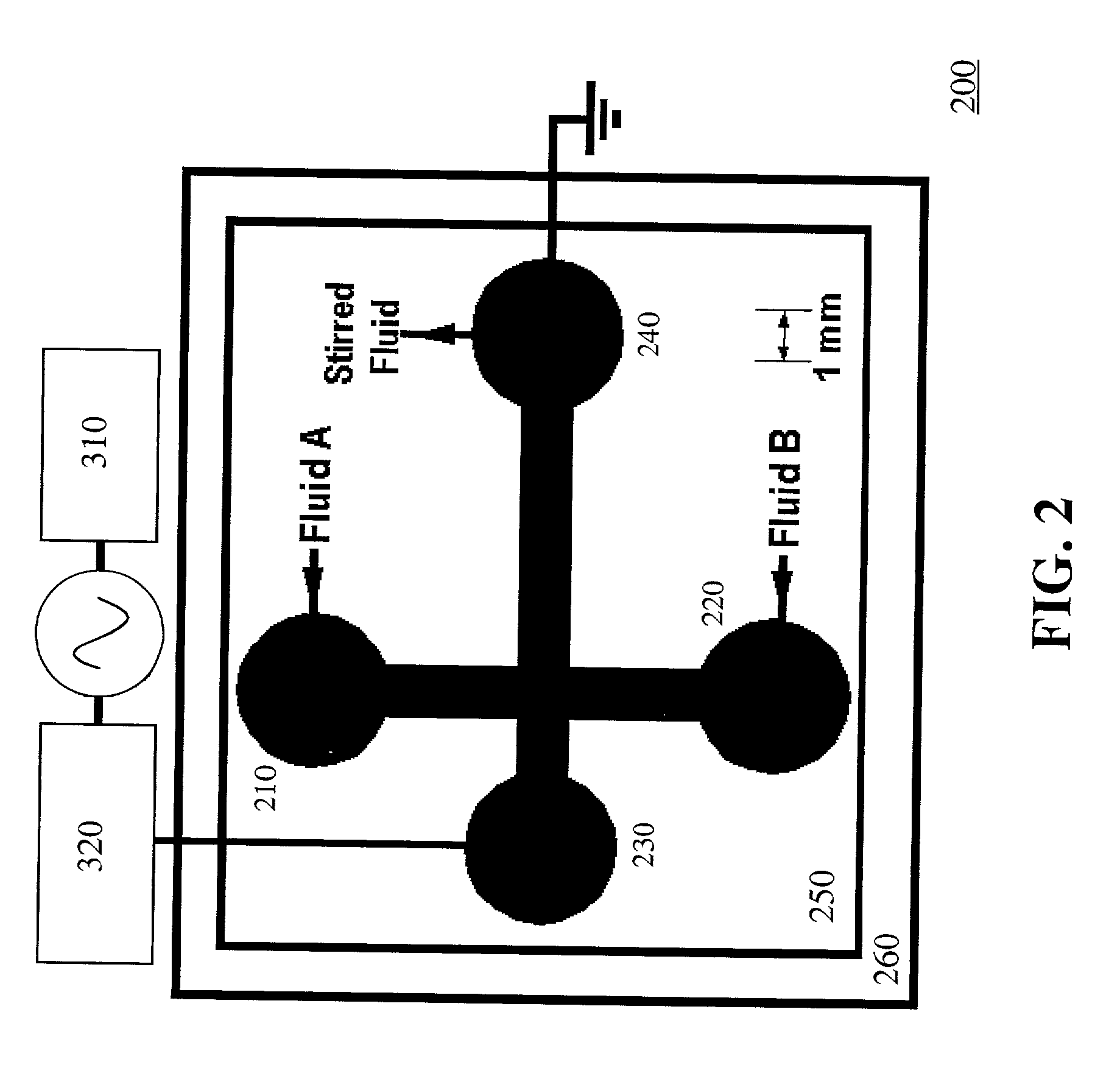Electrokinetic instability micromixer
- Summary
- Abstract
- Description
- Claims
- Application Information
AI Technical Summary
Benefits of technology
Problems solved by technology
Method used
Image
Examples
Embodiment Construction
[0042]FIG. 1 illustrates a prior art electrokinetic micro-fluid mixer. A chamber 110 is provided with liquid inlets 115 and 120 which can lead from reservoirs A and B and serve to introduce liquids from the reservoirs into chamber 110 and a single fluid outlet 125 which receives the liquid output from chamber 110 and directs it elsewhere. At least a portion of the chamber 110 is constructed using a dielectric material, such as silica or alumina, whose conductivity is less than that of the introduced liquids and will support electroosmotic flow.
[0043]The dielectric portion of chamber 110 is fitted with pairs of spaced electrodes, such as 130 and 140. Each pair of spaced electrodes is in contact with one liquid and is respectively connected to a direct current (D / C) power supply 135 and 145. The magnitude of the velocity of flow of fluids in chamber 110 is controlled by the DC power supply 135 and145.
[0044]As described above, an electric double layer is created in a liquid, and partic...
PUM
| Property | Measurement | Unit |
|---|---|---|
| Force | aaaaa | aaaaa |
| Pressure | aaaaa | aaaaa |
| Electrical resistance | aaaaa | aaaaa |
Abstract
Description
Claims
Application Information
 Login to View More
Login to View More - R&D
- Intellectual Property
- Life Sciences
- Materials
- Tech Scout
- Unparalleled Data Quality
- Higher Quality Content
- 60% Fewer Hallucinations
Browse by: Latest US Patents, China's latest patents, Technical Efficacy Thesaurus, Application Domain, Technology Topic, Popular Technical Reports.
© 2025 PatSnap. All rights reserved.Legal|Privacy policy|Modern Slavery Act Transparency Statement|Sitemap|About US| Contact US: help@patsnap.com



